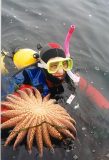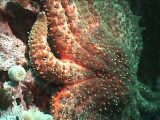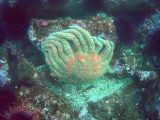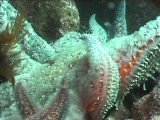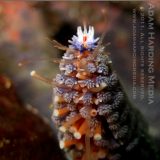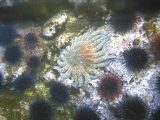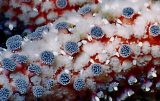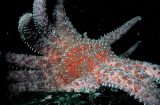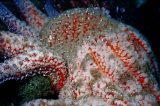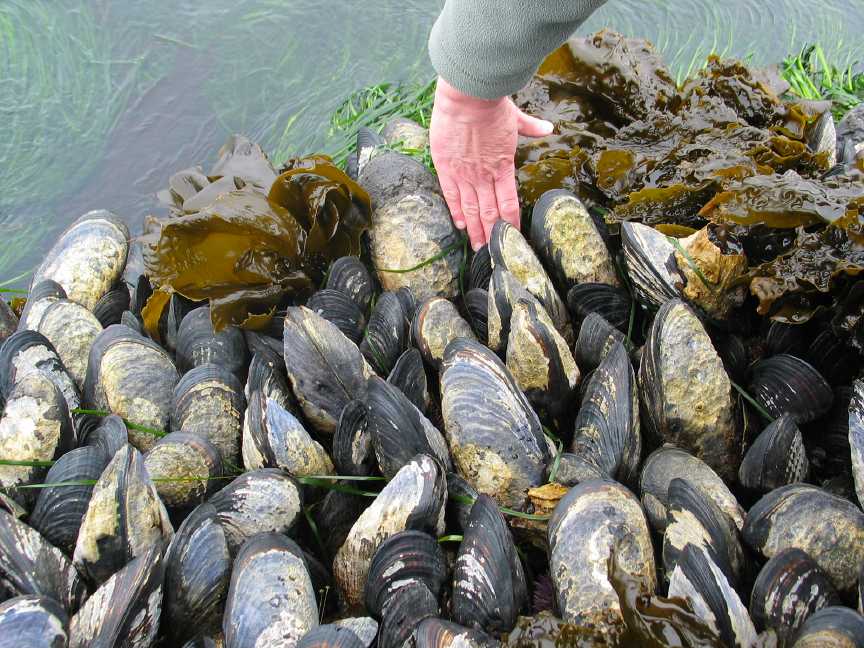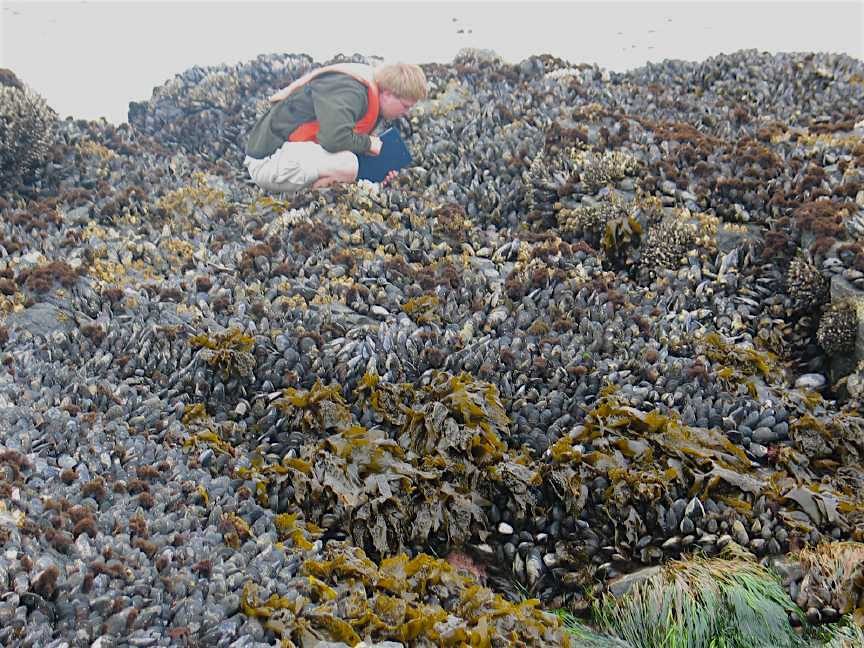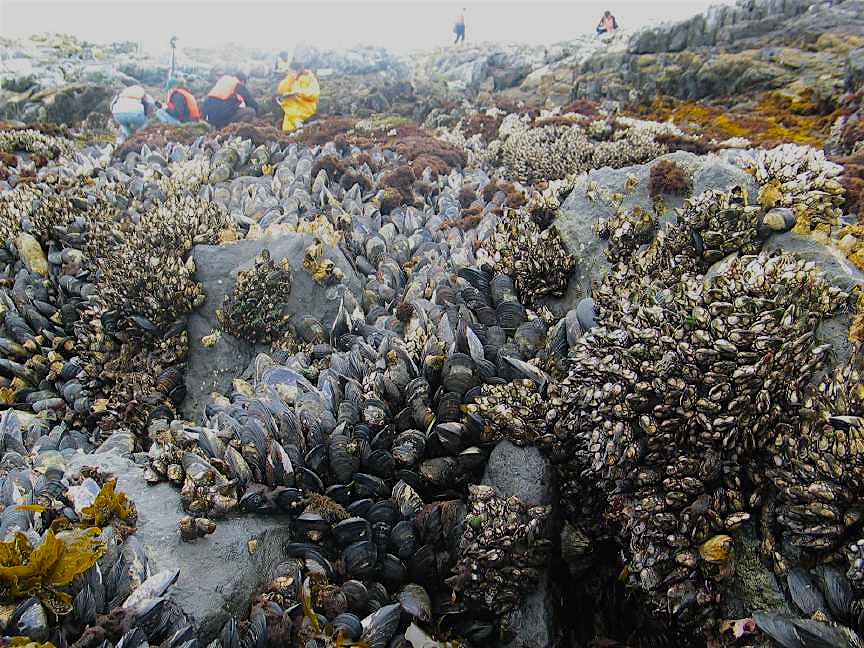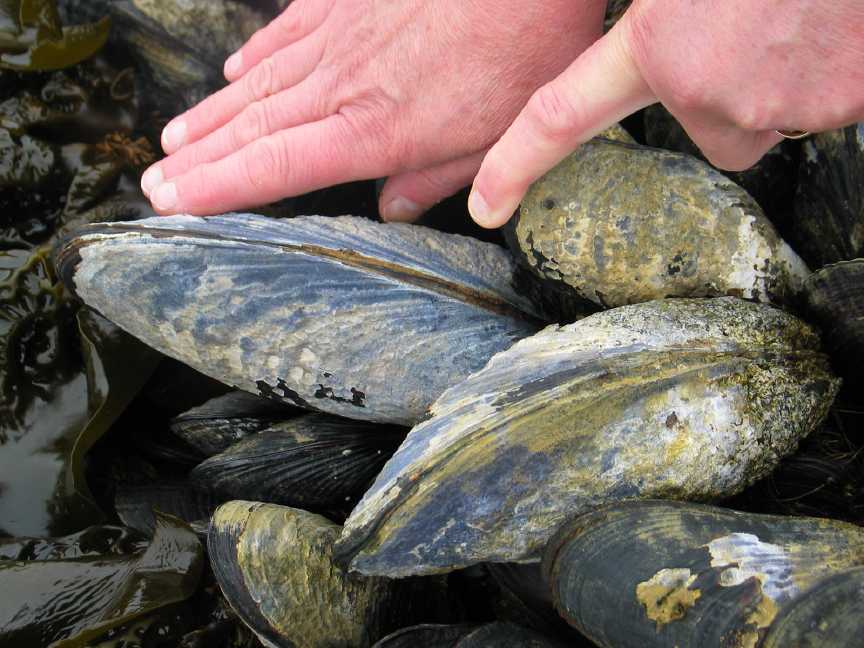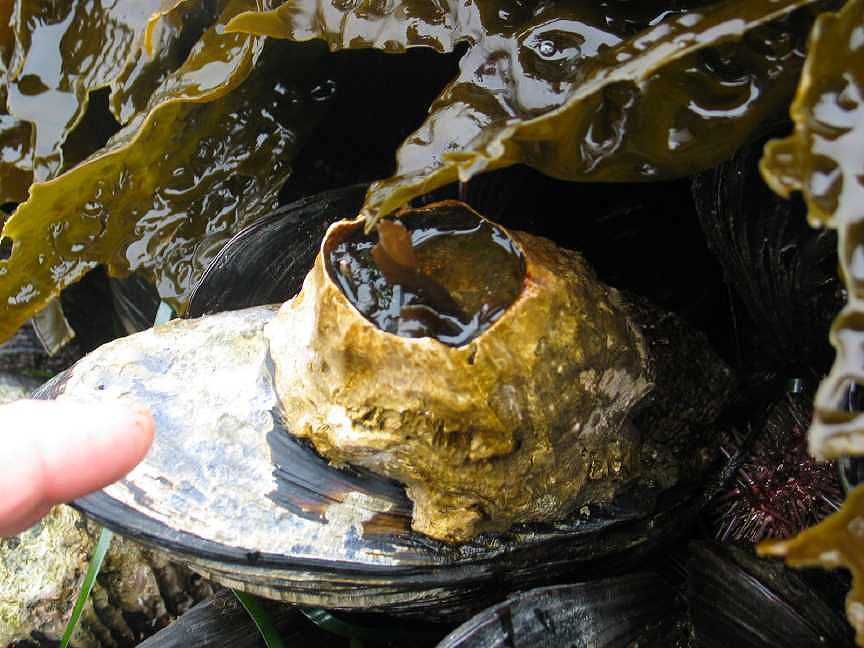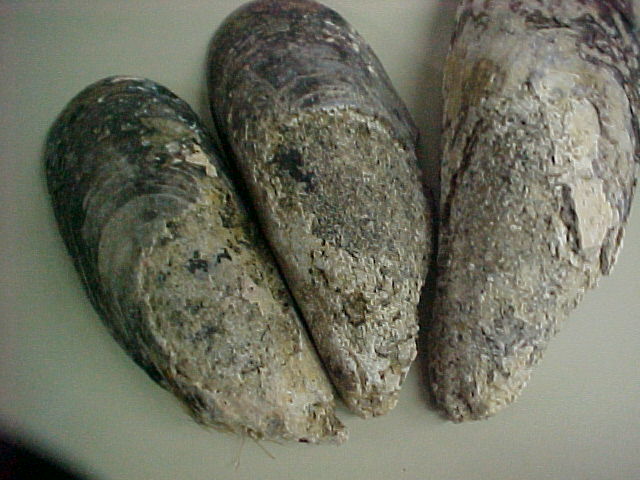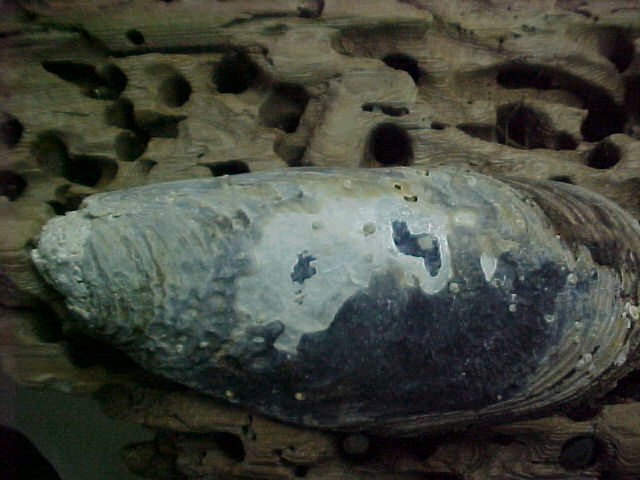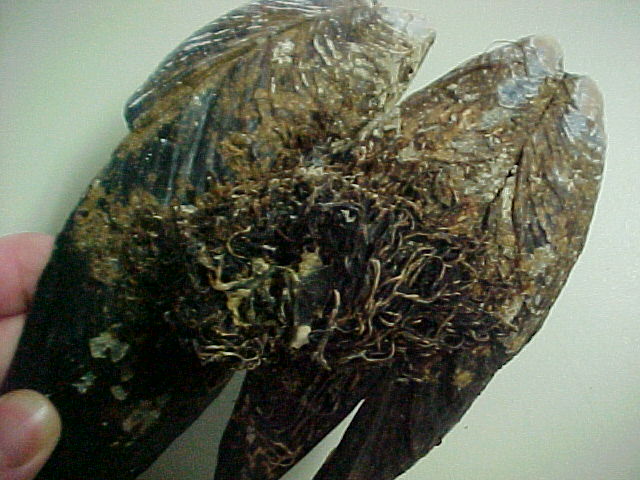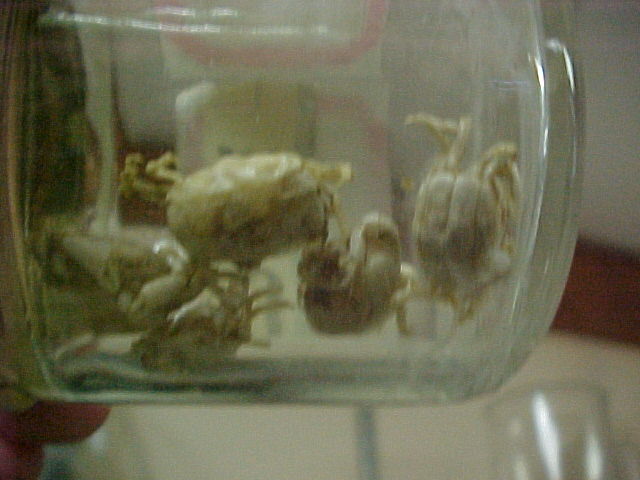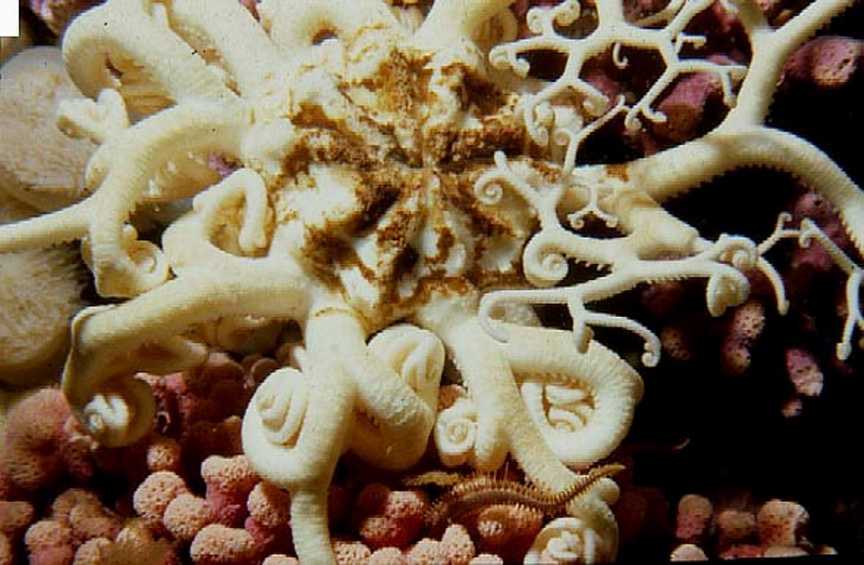 What are basket stars ?
What are basket stars ?
Basket stars are entirely marine invertebrate animals with a pentaradial symmetry. Their bodies are composed of a central disk with multitudes of arms branching dichotomously forming thousands of branchlets. The central disk can be approximately 14cm and the arms 4-5 times the length of the disk. Their colours vary between individuals and often on different parts of the body ranging from beige to almost white.
Domain Eukarya
Kingdom Animalia
Phylum Echinodermata
Class Ophiuroidea
Order 0phiurida
Suborder Euralina
Family Gorgonocephalidae
Genus Gorgonocephalus
Species eucnemis
Common Name:Basket Star
Habitat.
Can be found in rocky intertidals in areas with high high currents only (~10cm/s or more ). Juveniles typically cling to adults and on octocoral colonies ,while adults locate crevices in which to hide during day and then climb to an elevated point to feed at night.
How do they feed ,On What and When.
When feeding, they extend several of their arms into the water, the branchlets spread out like a fan, oriented so that they are more or less perpendicular to the water current. Macroscopic zooplankton including chaetognaths are caught by an array of microscopic hooks on the arms. Branchlets in the vicinity curl and wrap around captured prey forming a localized knot. Mucus extruded from glands further immobilise the prey. At some point knot-laden arms roll in towards the underside of the disk and the captured prey is transferred to the mouth. At the mouth there is a comb like structure the arms pass through to remove all the trapped prey. The prey is then ingested as the arm is redeployed. The gut is very simple and is contained entirely within the central disk hence if the disk is not puffy and inflated the star is starving.
Reproduction and feeding in Basket stars .
This is an example of a juvenile basket star, nestled into the lobes and surrounded by the polyps of the soft pink coral, Gersemia rubiformis.
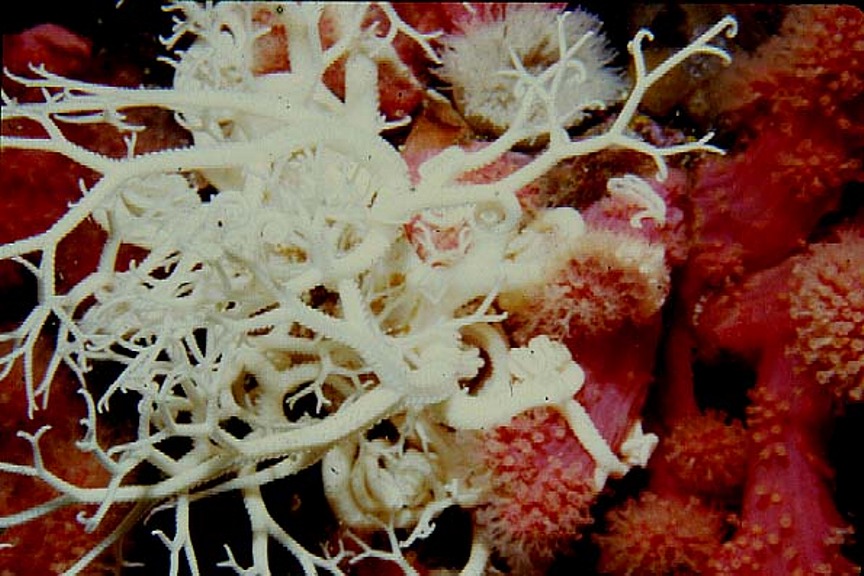 G.Fletcher photos.
G.Fletcher photos.
The sexes are separate and they spawn planktonic larvae. They can grow back their limbs if they happen to get chopped off .They also have tube feet and a water vascular system and also pedicellariae for protection. They are also filter feeders and they have a one way digestive system -meaning that the mouth performs the functions of a mouth plus those of an anus .
Who Preys on them?
Though they are cryptic and difficult to spot, they do have predators. Their main predators are fish and other invertebrates like crabs . There actually isn’t much to eat in a basket star but evidence suggests that most contents of some fish guts are basket star arms .
Biological association.They have mutualistic relations with other animals particularly sponges and Gthe soft coral, Gersemia. In such relationships, both the star and the host animal benefit. They either hide underneath the sponge (because it is poisonous and only a few animals other animals can dare touch it), or they live in canals or openings in sponges called ostia . The star thus gains protection from predators and at night it is usually seen sweeping over the surface of the sponge removing the large debris clogging the sponge and consumes it, and once again the star gains something –food. However, the sponge also benefits in that it gets cleaned whereas if it had continued clogged with debris as it was, its feeding efficiency would be reduced since it’s a filter feeder
References
www.reefs.org–(date-1/31/02) ,
Intertidal Invertebrates of California –(Robert H .Morris et.al.)

